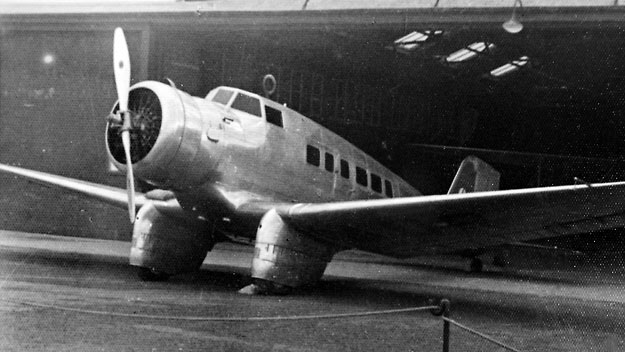
This all-metal
passenger aircraft (c/n 42) was powered by a 735hp Wright SR-1820-F2
Cyclone radial and was the only one of its type in Australia.
The Delta was initially registered in the USA as NR14267 and owned by Chicago businessman George F. Harding who used it for three years as an executive transport. In April 1938 it was purchased by the American explorer Lincoln Ellsworth for his fourth and last Antarctic expedition in 1938/39 (Ellsworth had used an earlier Northrop Gamma on previous expeditions in an ultimately successful attempt to fly across Antarctica). The Delta was stripped of internal cabin fittings and auxiliary long-range fuel tanks were fitted.
The Ellsworth expedition left New York on 16 August 1938 with the big Northrop aboard the expedition’s ship Wyatt Earp alongside a smaller Aeronca (later VH-ACK) on floats. Calling first in Sydney and then South Africa, they left Capetown in October heading south. In Antarctica the Northrop, fitted with skis, was craned on to the ice of a long frozen fjord. After making a short test flight, Ellsworth set out on 11 January 1939 with Canadian pilot 'Red' Lymburner on a single exploratory flight into the Antarctic interior.
When the Wyatt Earp docked in Australia at the end of the expedition, the Commonwealth Government purchased the ship and the two aircraft on board. The photo below shows the Delta in storage during 1939. It was kept in a hangar at RAAF Richmond, alongside Kingsford Smith's Fokker F.VIIb Southern Cross, incidentally itself a former polar explorer.
.jpg)
In June
1939 the Delta was taken out of storage and allocated to the Department
of Civil Aviation to assist in the task of calibration of radio
navigation aids. It was flown from Sydney/RAAF Richmond to Melbourne/Essendon
for a complete overhaul by Australian National Airways. The aircraft
was subsequently added to the civil Register as VH-ADR on 16 August
1940 and a Certificate of Airworthiness for it was issued in September.
It was intended to be used primarily for Lorenz
radio range test work - "Recent flights have shown that the
aircraft is very suitable for the reception of radio range signals".1 The aircraft seated six and had a cruising speed of 175 mph (152 kt)
at 60% power, burning 35 gallons (132 l) per hour. This gave it a useful
cruising range of 1,400 miles (2,250 km).
In 1942 DCA aircraft engineer Harry Moss worked on the aircraft and described it as "handsome, sophisticated...it's comprehensive radio, instrumentation, and navigation gear was in first class condition, but the aeroplane was rather battered by hail and ice, and the Cyclone engine was somewhat tired".
The photos at the top of the page and the two below
are thought to show the aircraft in DCA service. The photo immediately below was taken at Adelaide/Parafield at an unknown date; the date
and location of the one below that are not known.
The Delta was operated by DCA until 24 July 1942 when it was released
on charter to the Directorate of Air Transport, Allied Air Force, South-West
Pacific Area and operated by the US Army Air Force in Australia. The aircraft
was flown from Essendon to Geraldton, WA, where it was taken over by the
RAAF on 3 August when the USAAF unit operating it moved north. The RAAF
returned the aircraft to DCA at Essendon on 17 September after an engine
overhaul and some 60 hours flying, terminating the DAT charter.
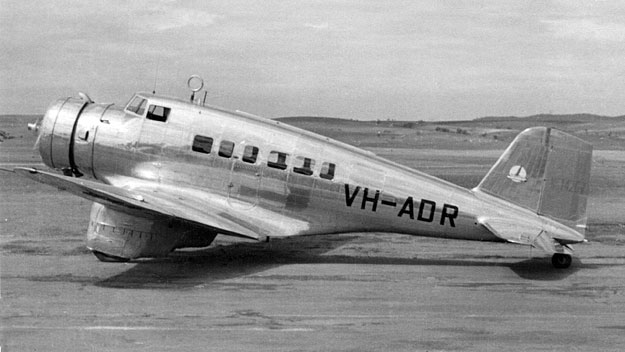
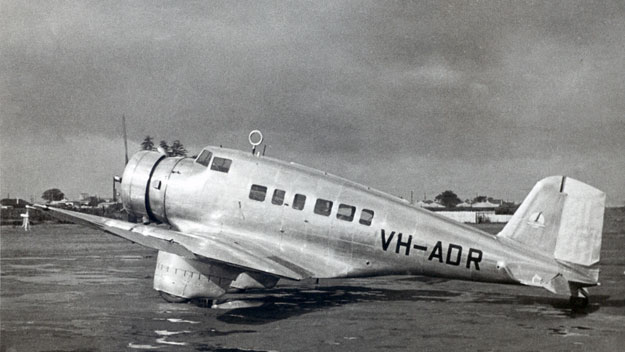
The logo on the aircraft's fin is that of US manufacturer Northrop Corp., but on a circular background rather than the triangular one shown at right.
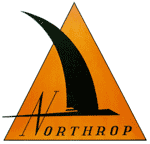
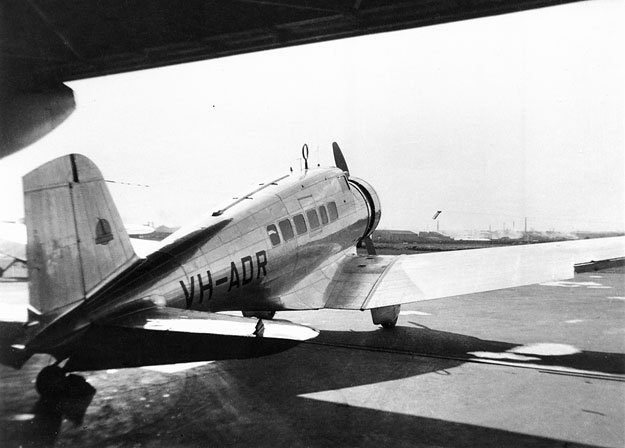
In December
1942 DCA agreed to transfer the Delta to the RAAF, but the terms of this
transfer remain unclear. It appears the aircraft was intended as a loan
by DCA, but later correspondence on the aircraft's file shows that DCA
wished to have it struck from the civil Register. The situation is made
more ambiguous by an entry on the aircraft's RAAF Form E./E.88 (Record
Card - Airframes, Aero Engines, Mechanical Transport and Marine Craft)
that most unusually it was to be marked with both its new RAAF serial
A61-1 and at the same time its civil
registration VH-ADR was to be marked on the tailplane (sic).
The limited photographic evidence available (see below) indicates that
this may in fact not have occurred. Note also the rough overspray of the
underside camouflage colour on the tyres. In the event the aircraft was
never returned to DCA.
The Delta was delivered to 1 Aircraft Depot, RAAF Laverton, Vic, by 1 Communications Flight on 11 December 1942 and immediately allotted to 35 Squadron at RAAF Pearce. In July 1943 it was allotted to 34 Squadron, Hughes Airfield, Noonamah, NT, but a day later this was changed to 37 Squadron, based at RAAF Laverton. Plagued by lack of spare parts the RAAF did little flying in this orphan aircraft before it was extensively damaged on takeoff on 30 September 1943, apparently due to a collapsed tailwheel strut.
In October the remains were allotted to 2 Aircraft Depot, RAAF Richmond, for conversion to components. Though Ansett Airways sought to use her, there were just no replacement parts for the Northrop and the she was stored damaged at RAAF Richmond for a year before the remains were transferred to 2 Central Recovery Depot and she was broken up.
(Photos: 1-CAHS/Len Dobbin collection;
2-Sydney Morning Herald/Geoff Goodall collection; 3-SAAM; 4 & 5-Frank Walters collection; 6-CAHS collection)
Back
to the Departmental Aircraft index page
If this page appears without a menu bar at top and left, click here